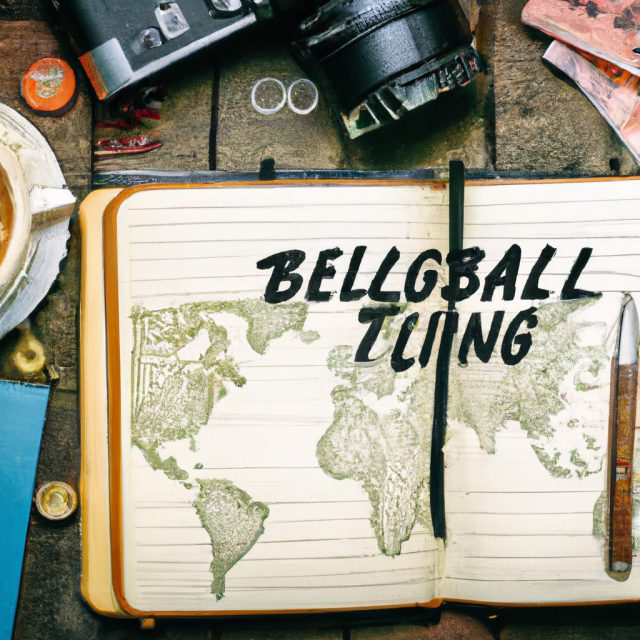The flicker of wanderlust. It starts as a quiet whisper, a captivating photo on social media, a scene in a movie, or a story from a friend. Soon, that whisper grows into a persistent call to adventure—a desire to see the world, experience new cultures, and create memories that last a lifetime. But between the dream of a perfect getaway and the reality of boarding a plane lies a crucial, often intimidating process: planning. The sheer volume of details, from budgets and bookings to visas and vaccinations, can feel so overwhelming that many great travel dreams never leave the realm of imagination. But what if you had a roadmap?
This is that roadmap. We’ve distilled the complex art of trip planning into a comprehensive, 10-step guide designed to take you seamlessly from a vague idea to a well-executed, unforgettable journey. Whether you’re a first-time traveler or a seasoned globetrotter looking to refine your process, this guide will empower you to take control, eliminate the stress, and craft an experience that is uniquely yours. Let’s turn that dream into your next destination.
Step 1: The Spark – Your Trip Planning Guide Starts Here

This small change adds the keyword directly into a visible and relevant heading, boosting SEO without feeling forced.
Every unforgettable adventure begins with inspiration—and a solid plan. This trip planning guide starts by helping you define the purpose of your journey. Before you even think about booking a flight, the most important step is to understand the “why” behind your trip. Are you seeking relaxation, high-octane adventure, cultural immersion, a culinary journey, or a chance to reconnect with nature? Your answer will be the compass that guides all subsequent decisions.
Ask Yourself These Questions:
- What kind of experience am I craving? Do I picture myself lounging on a sun-drenched beach, hiking a rugged mountain trail, navigating the bustling streets of a megacity, or exploring ancient ruins?
- Who am I traveling with? A solo trip offers ultimate freedom, a romantic getaway has different priorities than a family vacation with young children, and a trip with friends might focus on social activities.
- What is my travel style? Do I prefer luxury resorts, charming boutique hotels, budget-friendly hostels, or unique vacation rentals?
Once you know your “why,” the “where” becomes much clearer. Instead of a vague “I want to go to Europe,” you might realize, “I want a romantic, food-focused trip,” which could lead you to Tuscany, Italy, or Provence, France. If your answer is “I need a solo adventure in nature,” you might consider the national parks of Costa Rica or the dramatic landscapes of New Zealand. Create a shortlist of 3-5 potential destinations that align with your travel goals.
Step 2: The Blueprint – Budgeting for Your Adventure
Money is often the biggest hurdle in travel, but it doesn’t have to be a barrier. A realistic budget is not a restriction; it’s a tool of freedom that allows you to plan with confidence. Break your budget down into major categories:
- Transportation: This includes your main flights, trains, or car rental to get to your destination, as well as local transport like subways, buses, taxis, or ride-sharing.
- Accommodation: The cost per night for your hotel, hostel, Airbnb, etc. This can vary dramatically based on your travel style.
- Food & Drink: Be realistic. Will you be dining at fine restaurants, grabbing street food, or cooking some of your own meals? Research the average cost of a meal in your chosen destination.
- Activities & Sightseeing: Account for museum tickets, tour fees, park entrance fees, and any special experiences you want to have.
- Pre-Trip Expenses: Don’t forget costs like travel insurance, visa applications, vaccinations, or new gear you might need.
- Contingency Fund: Always, always set aside an extra 10-15% of your total budget for unexpected expenses. A missed train, a medical issue, or a can’t-miss souvenir shop—this fund is your safety net.
Once you have a target number, create a savings plan. Determine how much you need to save each month and set up an automatic transfer to a dedicated travel savings account. This makes saving effortless and keeps your travel fund separate from your daily expenses.
Step 3: The Calendar – Choosing the Perfect Time to Go
Timing is everything. The time of year you travel will profoundly impact your experience, budget, and the crowds you’ll encounter. Consider these factors:
- Peak Season: Usually aligns with the best weather and school holidays. Pros: Everything is open, and the atmosphere is vibrant. Cons: Higher prices, bigger crowds, and the need to book far in advance.
- Off-Season (Low Season): Often coincides with less desirable weather. Pros: The best deals on flights and accommodation, and fewer tourists. Cons: Some attractions may have limited hours or be closed entirely.
- Shoulder Season: The sweet spot between peak and off-season. Pros: A fantastic balance of pleasant weather, manageable crowds, and reasonable prices. This is often the best time to travel to many destinations.
Research your destination’s specific seasons, as well as major local holidays or festivals that might affect your plans. Also, consider the length of your trip. How much time can you realistically take off work? Be sure to factor in travel days, which can easily eat up two full days on an international trip.
Step 4: The Paper Trail – Passports, Visas, and Documentation
This step is non-negotiable and should be handled well in advance. Nothing ruins a trip faster than being denied entry at the airport.
- Passport Validity: Check your passport’s expiration date. Many countries require your passport to be valid for at least six months after your planned departure date from their country. If it’s close, renew it immediately.
- Visa Requirements: Research if you need a visa for your destination. Some countries offer visa-free travel, some require an e-visa you can apply for online, and others require a formal application at an embassy or consulate, which can take weeks or even months.
- Travel Insurance: Do not travel without it. Travel insurance is your financial protection against trip cancellations, lost luggage, and, most importantly, medical emergencies abroad. The cost is a tiny fraction of what you could pay for an unexpected hospital visit overseas.
- Digital & Physical Copies: Make photocopies of your passport, visa, driver’s license, and credit cards. Keep one set with you (separate from the originals) and leave another with a trusted person at home. Also, save digital copies in a secure cloud service like Google Drive or Dropbox.
Step 5: The Big Tickets – Booking Flights and Accommodation
With your budget, destination, and dates set, it’s time for the exciting part: making it official!
Booking Flights:
Use flight comparison websites like Google Flights, Skyscanner, or Momondo to search for the best deals. Set up price alerts for your route so you get notified when prices drop. Be flexible with your dates if possible; flying on a Tuesday or Wednesday is often cheaper than on a Friday or Sunday. Consider flying into a nearby, smaller airport, which can sometimes offer significant savings.
Booking Accommodation:
Book your accommodation based on your travel style and budget. Use reputable sites like Booking.com, Hostelworld, or directly with hotel chains. For longer stays or a more local feel, consider Airbnb or Vrbo. Read recent reviews carefully, paying attention to comments about cleanliness, location, and safety. The location is key—staying somewhere central might cost a bit more but can save you a lot of time and money on transportation.
Step 6: The Itinerary – Crafting Your Daily Adventures
An itinerary is not about scheduling every minute of your day. It’s about creating a flexible framework that ensures you see and do the things that are most important to you without feeling rushed or overwhelmed. A good itinerary balances planned activities with free time for spontaneous discovery.
- Research and Prioritize: List all the sights, activities, and restaurants you’re interested in. Then, group them by location on a map (Google My Maps is excellent for this) to plan your days efficiently and minimize travel time between attractions.
- Book in Advance: For highly popular attractions like the Eiffel Tower, the Colosseum, or Alcatraz, book your tickets online weeks or even months in advance to avoid long lines or sold-out dates.
- Don’t Over-schedule: A common mistake is trying to cram too much into one day. This leads to exhaustion and a superficial experience. Plan one or two major activities per day and leave the rest of the time for exploring, relaxing at a café, or simply getting lost in the local neighborhoods.
Step 7: The Essentials – Packing Smart, Not Hard
Packing can be stressful, but with a bit of strategy, you can pack efficiently and avoid over-packing. The golden rule is to pack for your planned activities and the expected weather.
- Make a List: A few weeks before your trip, start a detailed packing list. This prevents last-minute panic and ensures you don’t forget anything crucial.
- Choose Versatile Clothing: Opt for clothes that can be layered and worn in multiple combinations. Neutral colors are your best friend, with a few colorful accessories to spice things up.
- Use Packing Cubes: These are a game-changer for organization and compressing clothes, saving you valuable luggage space.
- Carry-On Essentials: Your carry-on bag should contain anything you can’t live without: medications, a change of clothes, electronics, chargers, travel documents, and any valuables. Never pack these in your checked luggage.
Step 8: The Local Touch – Embracing Culture and Staying Safe
Responsible and respectful travel enriches your experience and leaves a positive impact on the places you visit.
- Learn Basic Phrases: Learning to say “hello,” “please,” “thank you,” and “excuse me” in the local language goes a long way in showing respect and connecting with people.
- Understand Cultural Norms: Research local customs and etiquette, especially regarding dress code (particularly for religious sites), tipping, and greetings.
- Stay Aware: Be mindful of your surroundings, especially in crowded tourist areas. Keep your valuables secure, be wary of common tourist scams, and trust your intuition.
- Emergency Information: Know the local equivalent of 911 and the address of your country’s nearest embassy or consulate.
Step 9: The Final Countdown – Pre-Departure Checklist
In the final week before you leave, it’s time to tie up loose ends and get everything in order.
- Inform Your Bank: Notify your bank and credit card companies of your travel dates and destinations to prevent them from freezing your cards for suspicious activity.
- Home Arrangements: Arrange for a pet sitter or plant waterer, pause your mail delivery, and inform a neighbor of your absence.
- Download Everything: Download offline maps, booking confirmations, music, podcasts, and movies. Don’t rely on having Wi-Fi everywhere.
- Charge Your Devices: Fully charge all your electronics the night before you leave and pack your portable power bank.
Step 10: The Journey Begins – Relax and Be Present
You’ve done it. You’ve put in the hours of research, saving, and meticulous planning. Now, the most important step is to let go and enjoy the journey. Travel is unpredictable; flights get delayed, the weather changes, and things might not always go exactly as planned. Embrace it. Some of the best travel stories come from unexpected detours.
Put your phone away from time to time, engage your senses, talk to locals, and be fully present in the moment. The meticulous planning you did was designed to give you the freedom to do just that. You’ve earned this adventure, so soak in every moment. Your future self, looking back at the photos and memories, will thank you for it.
Learn more: The Digital Nomad’s Blueprint: How to Thrive While Working and Traveling the World














